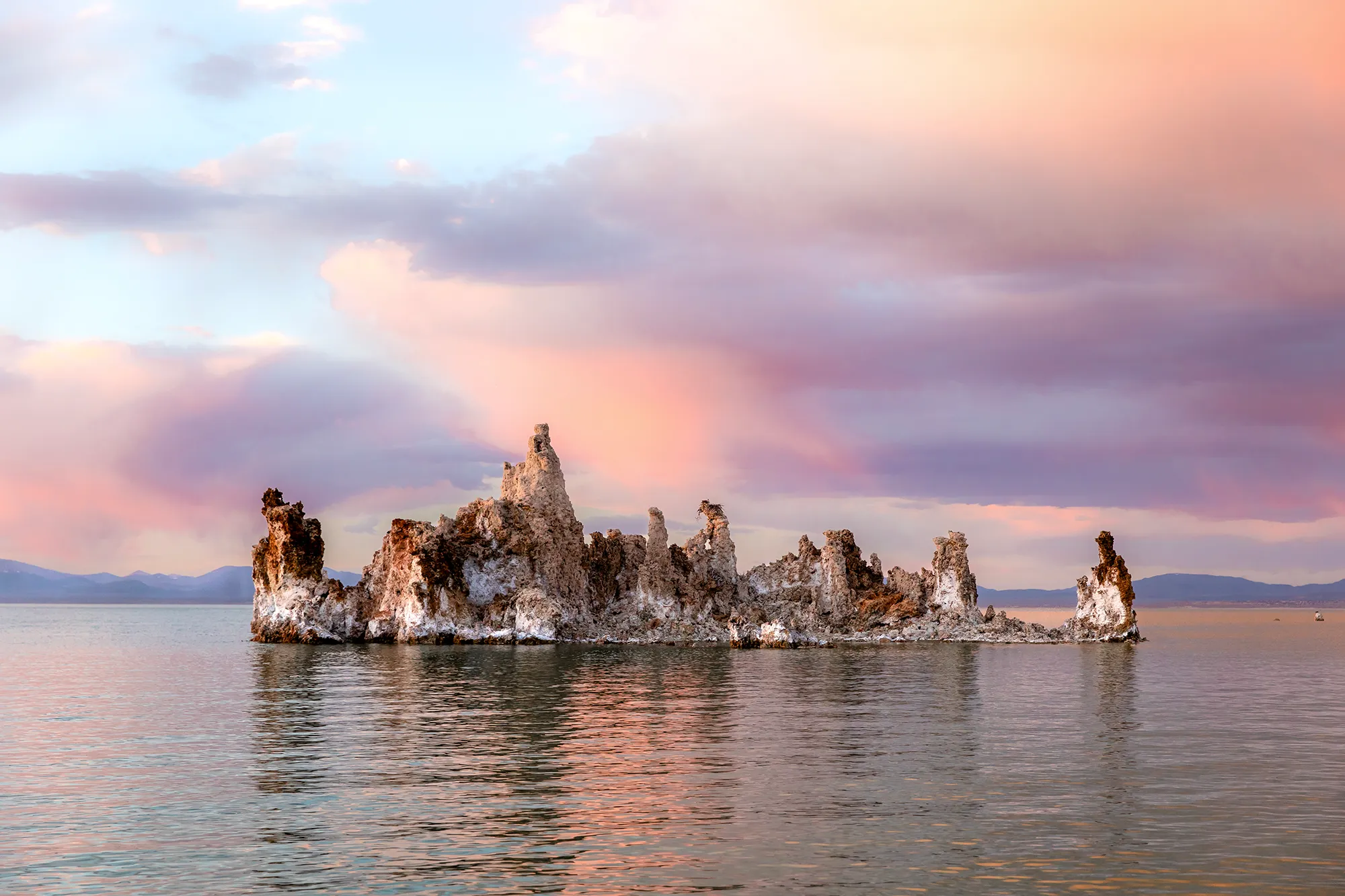
Mono Lake: Ancient waters and tufa towers in California's Eastern Sierra
Standing on the shores of Mono Lake for the first time is the kind of experience that lingers in your memory. Before you, the expansive, shimmering waters stretch out beneath a ceiling of open sky, interrupted only by tufa towers rising like sculptures from another world. In this guide, we’ll trace what makes Mono Lake in California’s Eastern Sierra quietly unforgettable, how to connect with its subtle magic, how to plan your own visit, and why this ancient basin rewards those who explore at a slower, more mindful pace.
Key takeaways from exploring Mono Lake
Mono Lake features unique tufa towers formed when calcium-rich springs mix with alkaline waters, creating otherworldly formations that are especially striking during sunrise and sunset.
As one of North America's oldest lakes at 760,000 years old, Mono Lake's mineral-rich waters support millions of brine shrimp and alkali flies that attract countless migratory birds to this critical ecosystem.
The best way to experience Mono Lake is by slowing down—walking the South Tufa trail, birdwatching during migration seasons, or paddling through the buoyant waters.
Conservation efforts have helped stabilize Mono Lake's water levels after diversions to Los Angeles threatened its fragile ecosystem, though the lake remains lower than its historical levels.
First glimpse of Mono Lake: A landscape that stops you in your tracks
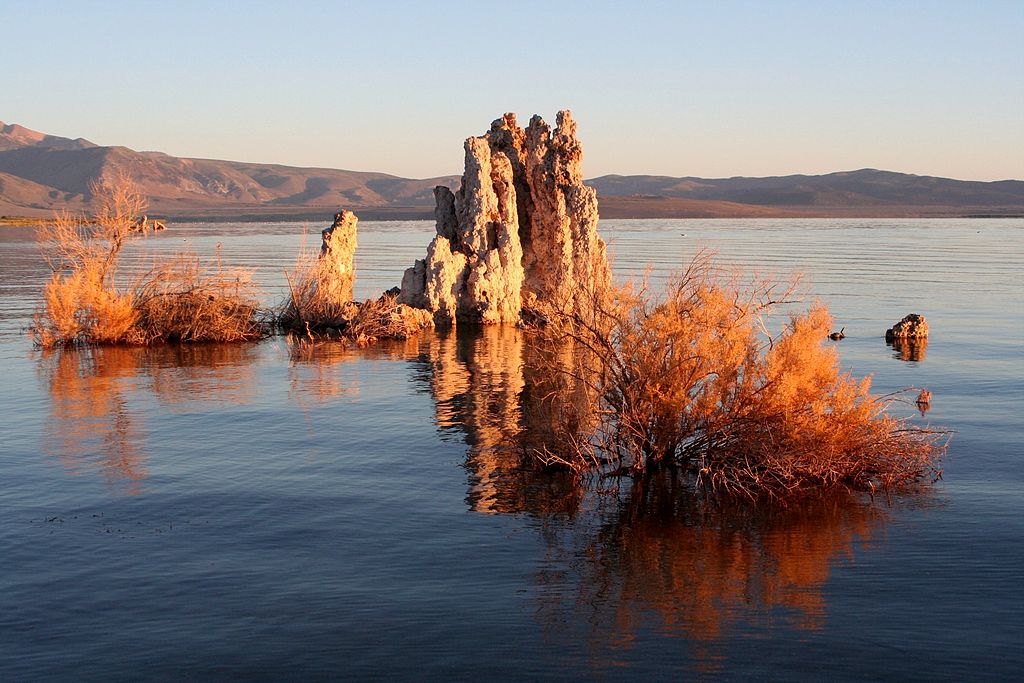
When you first catch sight of Mono Lake, it’s almost hard to believe what you’re seeing. Suddenly, everything opens up: water so mirror-like it seems to double the sky, mountains arching around you on the horizon, and the unmistakable tufa formations—natural spires of rock—thrusting upward from shore and shallow water. The lake’s salty, alkaline waters support creatures you won’t find anywhere else, building a one-of-a-kind ecosystem that feels somewhere between earth and another planet. The silence is striking, only occasionally broken by a gust of wind, a call from overhead birds, or your footsteps on the sunbaked ground.
Mono Lake’s beauty isn’t loud or showy. Instead, it’s found in quiet geological drama, wide-open solitude, and the slow shifting of light. Just outside Lee Vining, as you come over the pass and the reflective surface appears below, there’s a sense of awe—proof that nature still has the power to surprise us. For many, that first look isn’t simply a good view. It’s a call to slow down, pay attention, and soak up the rare balance that’s lasted here for close to a million years.
What makes Mono Lake so captivating?
Mono Lake draws you in quietly, layer by layer, the longer you linger along its shore. What sets it apart isn’t just the wide-open views, but the sense that you’ve landed somewhere rare, shaped by ancient waters, volcanic forces, and a pulse of life you won’t find anywhere else in California.
The quiet drama of tufa towers
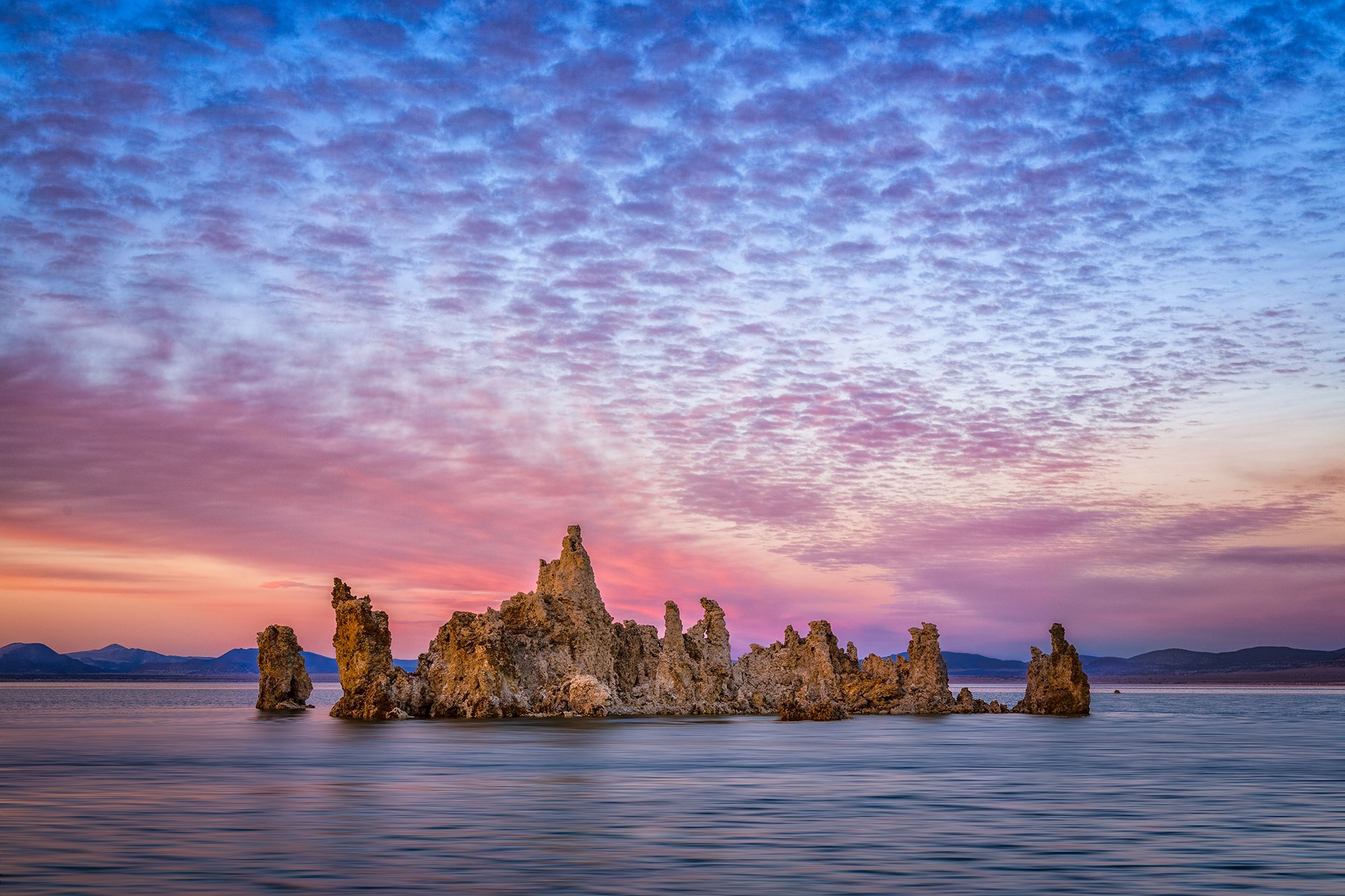
These towers are the unmistakable signature of Mono Lake. Tufa towers form underwater when calcium-rich springs mingle with the lake’s alkaline waters, slowly building up until changing water levels finally revealed them in the last century. Their textured, silvery ridges catch the low light at dawn and dusk, tossing long, dramatic shadows across calm water.
Wandering through the South Tufa area, it feels like you’re walking in a gallery sculpted by nature itself. Salty breezes and constant winds help to carve these formations into extraordinary shapes. If you pause, you’ll hear the gentle slap of water at their bases—nature’s way of reminding you the story here is still unfolding.
Ancient waters that never found the sea

Mono Lake ranks among North America’s oldest lakes—at least 760,000 years in the making. With no outlet, every mineral carried by mountain streams gets left behind, making the lake both much saltier and more alkaline than the ocean.
That unique makeup creates a world apart. Fish can’t survive in the briny lake, but millions of brine shrimp and alkali flies thrive in the mineral-rich waters. These creatures feed countless birds, while the lake’s mirror-like surface reflects the wide sky and the somber Mono Craters, echoing the area’s volcanic past. Standing here, you get a sense of time stretching back further than you can imagine—a true brush with geologic history in the Mono Lake basin.
Migratory birds and a world unlike anywhere else
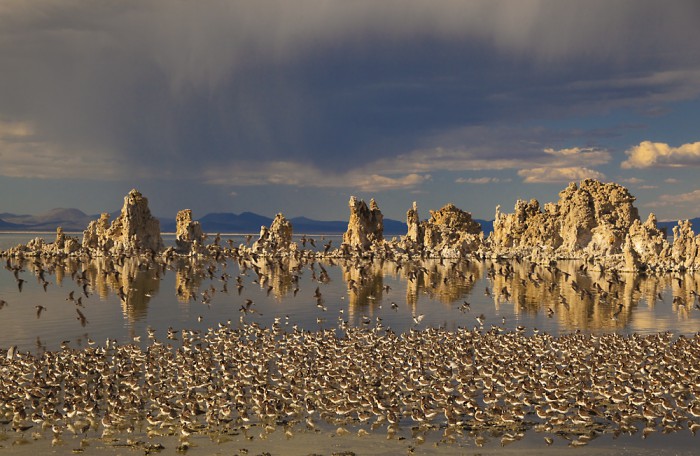
Mono Lake’s strange chemistry has fostered a fragile and spectacular ecosystem. Each spring and fall, millions of migrating birds turn the islands and shoreline into a bustling stopover, feeding on the abundant brine shrimp and alkali flies. California gulls flock here in one of the largest nesting colonies in the country, while the air vibrates with flight and song.
Birdwatching around Mono Lake feels like eavesdropping on a secret gathering. Osprey perch atop tufa or aging pilings, while sagebrush and late-season wildflowers complete this picture of surprising life. When you stand quietly at the shore, you’re swept into the rhythm of an ecosystem that has been finding balance for thousands of years.
What truly makes Mono Lake captivating?
-
Tufa towers that exist nowhere else in the world
-
Ancient, mineral-heavy waters in a dramatic and isolating setting
-
Critical habitat for millions of migratory and resident birds
All together, the geology, water, and wildlife of Mono Lake offer much more than a stunning view. They invite you to connect with a vast stretch of natural history—one that asks for patience, attention, and respect.
Ways to connect with Mono Lake
Mono Lake is so much more than a quick scenic stop. The real magic happens when you let yourself sink into the place—moving slowly, with all your senses open. The Mono Lake basin invites you to wander, watch, and listen, creating memories that last well beyond a snapshot.
Following the South Tufa trail at your own pace
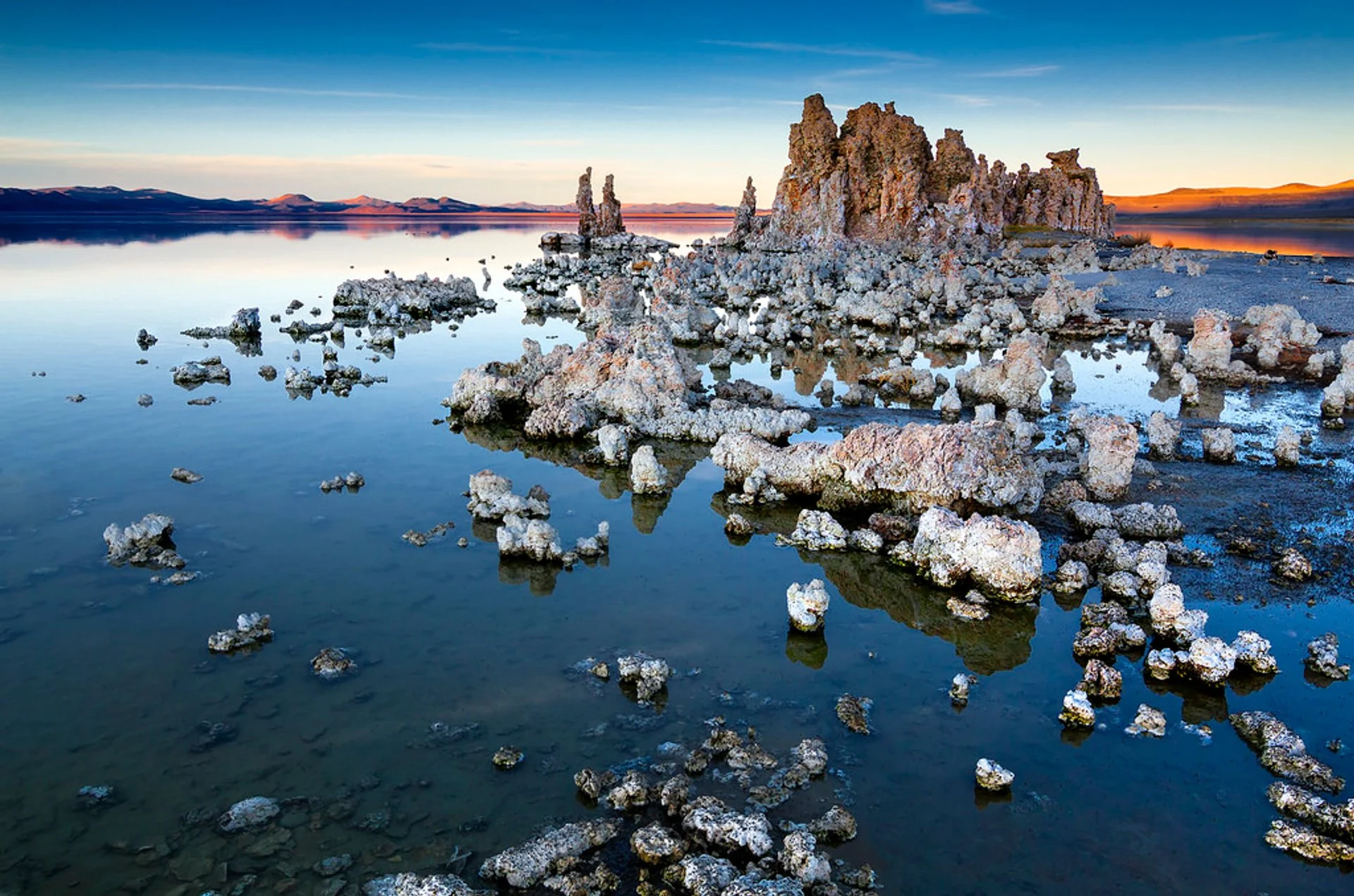
Let yourself drift along the South Tufa trail, where the lake’s famous formations rise from the water like an old-world sculpture garden. This stretch is where you’ll really get up close to the tufa towers—their forms look different from every perspective, especially as morning or evening sunlight carves out their details. Pause whenever you can. The rocks reveal their character in small textures and shifting light.
This trail is gentle and easy to follow, so hikers of all levels can enjoy it. Along the way, you’ll see interpretive signs explaining how the tufa towers form, the science of Mono Lake’s waters, and the tough plants that make their home here. Stick around for sunrise or sunset, and watch as the stone and water take on new colors—these are moments photographers wait for.
Walking here, you’re not just learning geology, you’re tuning in to the slow, ancient changes of the Mono Lake region itself. The quiet, the colors, and the thought that you’re standing on land millions of years old make the experience that much deeper.
Birdwatching and moments of stillness
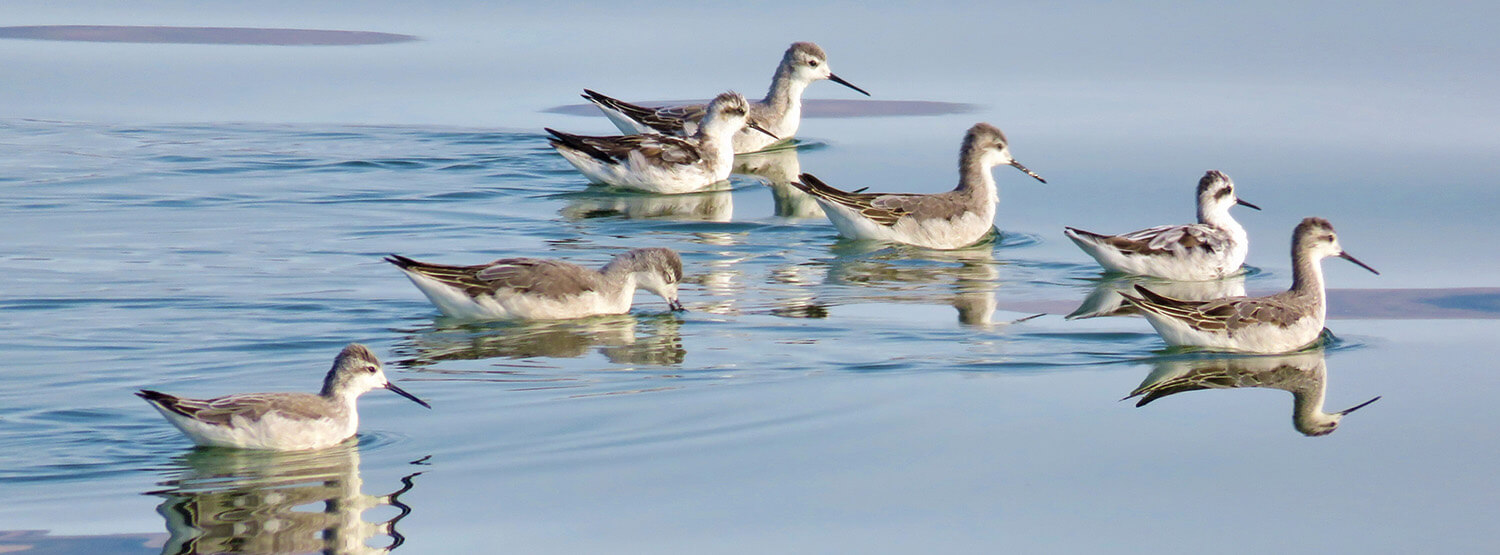
Mono Lake draws in birds—and people who long to watch them. Bring your binoculars and keep an eye out: California gulls gather on Negit Island, phalaropes twirl on the shoreline, and ospreys might swoop over their nests. During migration, the lake feels alive with movement and song, a reminder that Mono Lake is a vital stop on ancient flyways.
There’s a difference between seeing and really noticing. Find a quiet spot near the shore, and let the action unfold: watch, listen, and breathe in the calm. Whether you’re an avid birder or simply want a peaceful place to sit, these undisturbed moments quickly become the highlight of your visit. You become part of the gentle rhythm found only in the Eastern Sierra.
Paddling through saline waters
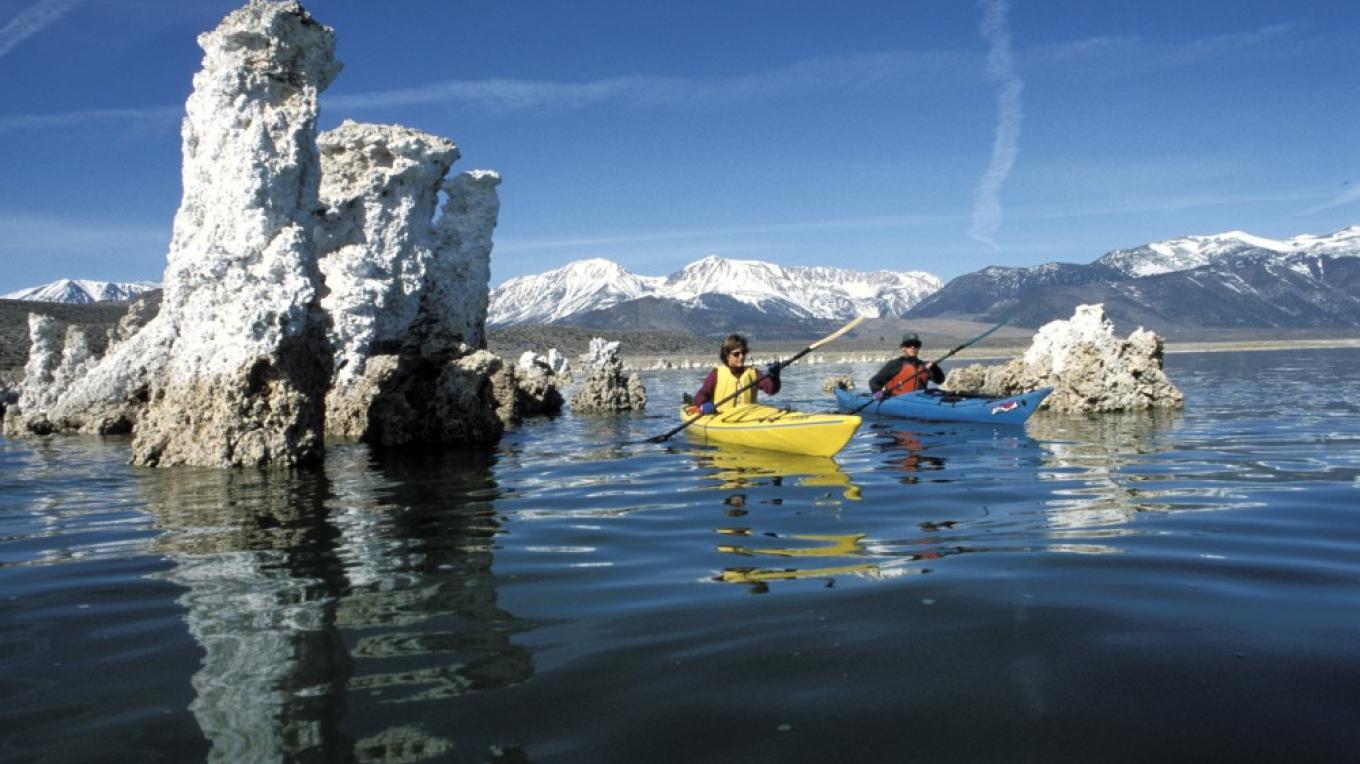
If you want to feel Mono Lake’s strangeness firsthand, head out on the water. Kayaking or canoeing here means floating with unexpected buoyancy in water as salty as the sea, and gliding among isolated tufa islands that you can’t reach any other way. The quiet is almost total, broken only by the dip of your paddle or a bird call overhead.
Early mornings are perfect for paddling, when the lake lies still and mountain reflections fill the surface. You don’t need lots of experience— outfitters in Lee Vining offer simple rentals and guided trips, plus advice on how to keep your exploration safe and respectful. Out there, surrounded by open sky and shimmering water, you’ll start to sense just how wild and solitary this place can be.
Connecting with Mono Lake comes down to a few simple ways:
Wandering among tufa formations on foot
Birdwatching—especially during migration
Trying the mineral-rich water by boat
However you explore, take it slow and tread lightly. Mono Lake is fragile, ancient, and endlessly rewarding to those who treat it with care.
Planning your time here
Mono Lake invites you to move at a quieter pace, to notice the small shifts in light and sound that make each visit unique. Planning your time here is as much about when and where as it is about how you show up in this ancient basin.
Best seasons and capturing the light
Each season at Mono Lake offers its own sense of wonder. In summer, trails stay clear and shorelines are open, making it easy to wander the South Tufa trail deep into the evening. Spring and early fall are when migratory birds fill the basin, creating a backdrop of activity that’s hard to find anywhere else. These months also tend to deliver mild, comfortable weather—ideal for birdwatching and photography. Winter brings fewer people and quieter moments, with the stark beauty of snow-dusted tufa somehow amplifying the lake’s remoteness. Keep in mind that winter storms can close some routes.
Photographers and early risers know how rewarding the light can be here. If you visit for sunrise, South Tufa and Navy Beach glow with soft gold and pastel tones. Sunsets often wash the saline waters in shades of pink and purple. For your camera or simply for yourself, the hour right after sunrise and just before sunset shows off the drama of mountains, clouds, and those textured tufa towers. It’s the perfect time to pause and really connect with the wild, open space.
Staying and camping in the Mono Lake basin
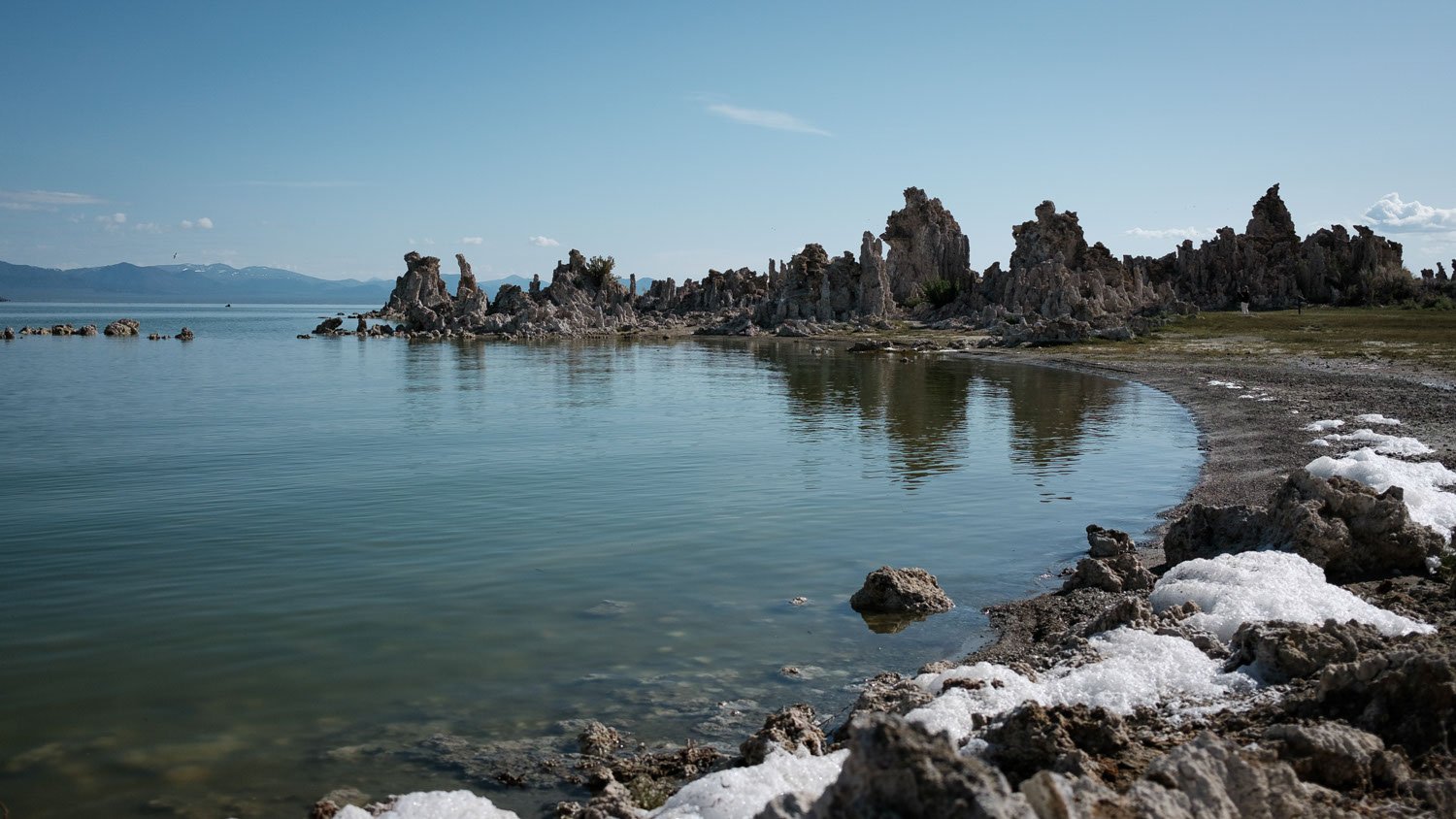
An overnight in the Mono Lake area changes everything. The gateway town of Lee Vining sits right by the water, with laid-back motels, classic cabins, and a handful of family-owned inns. Staying here gives you easy access to quiet mornings or starlit walks along the shoreline—timeframes when the lake feels its most peaceful.
Around Mono Lake you’ll find a mix of established campgrounds, county parks, and nearby National Forest grounds, ranging from fully equipped sites to basic, no-frills spots. If you seek more solitude, dispersed camping on public land is possible for self-sufficient travelers—just make sure you’re up to date on rules and leave as little trace as possible out of respect for this fragile place.
Here are a few things to keep in mind:
-
Book well ahead for summer or bird migration seasons, as Lee Vining tends to fill up quickly.
-
Be ready for temperature swings—hot, dry afternoons can turn into crisp, chilly nights.
-
Always follow posted guidance to protect tufa formations, nesting birds, and the delicate Mono Lake ecosystem.
Taking the time to stay overnight lets you truly soak in the quiet and slowly unfolding beauty that defines California’s Eastern Sierra. It’s about giving yourself space to be present, instead of just passing through.
Why taking it slow matters at Mono Lake
Mono Lake asks for your patience, not your checklist. Its stillness, soft-changing colors, and fragile balance reward anyone willing to slow down and settle in for a while.
This is a place that reveals itself in layers, given time. The broad Mono Lake basin, with its roots in ancient volcanoes and alkaline waters, invites us to pause. Listen for the wind threading through the tufa towers, the quiet shuffle of birds along the shore, or the gentle lapping of ancient waves. Sit for longer than you planned, and patterns appear— salt crystals drying in wild shapes on black rocks, or an unexpected flutter of wings above the water.
When you slow your pace, the true rhythm of the Mono Lake region starts to show itself—one shaped by nearly a million years of change. Wandering thoughtfully, paddling without hurry, or staying put until dusk settles into darkness gives you a chance to connect with something enduring and wild.
Choosing to move gently through Mono Lake reminds us why mindful travel matters. It honors this rare ecosystem and gives us a richer experience as travelers. At Mono Lake, time spent quietly is never wasted. It’s an invitation to become part of the scene, however briefly—to truly see, listen, and feel what makes these waters and tufa towers unforgettable.
Frequently Asked Questions
Is Mono Lake safe to swim in?
You can swim in Mono Lake, but it’s a very different experience compared to most lakes. The water’s high salt and alkaline content give incredible buoyancy, but they can also irritate your skin, eyes, or any small cuts. Most people just wade or float for a bit. Rinsing off after, either at the park facility or back in Lee Vining, helps avoid any lingering sting.
What movie was filmed at Mono Lake?
Mono Lake’s tufa formations have set the stage for several film and photography projects. Most notably, the haunting scenery at South Tufa appeared in the 1968 sci-fi classic "Planet of the Apes," where filmmakers used the lake’s alien look to transport audiences to another world.
What happened to Mono Lake?
In the late 1900s, Mono Lake’s water levels fell sharply when its feeder streams were diverted to supply Los Angeles. This left more tufa towers exposed and put the lake’s fragile ecosystem at risk—especially the nesting sites for birds. Thanks to the Mono Lake Committee and ongoing conservation efforts, the water levels have stabilized, though they’re still lower than they once were.
Do any fish live in Mono Lake?
There aren’t any fish in Mono Lake, since the saltiness and alkalinity are just too high for them. Instead, the lake teems with brine shrimp and alkali flies. These small creatures support huge gatherings of migratory birds, making Mono Lake’s ecosystem one of a kind.